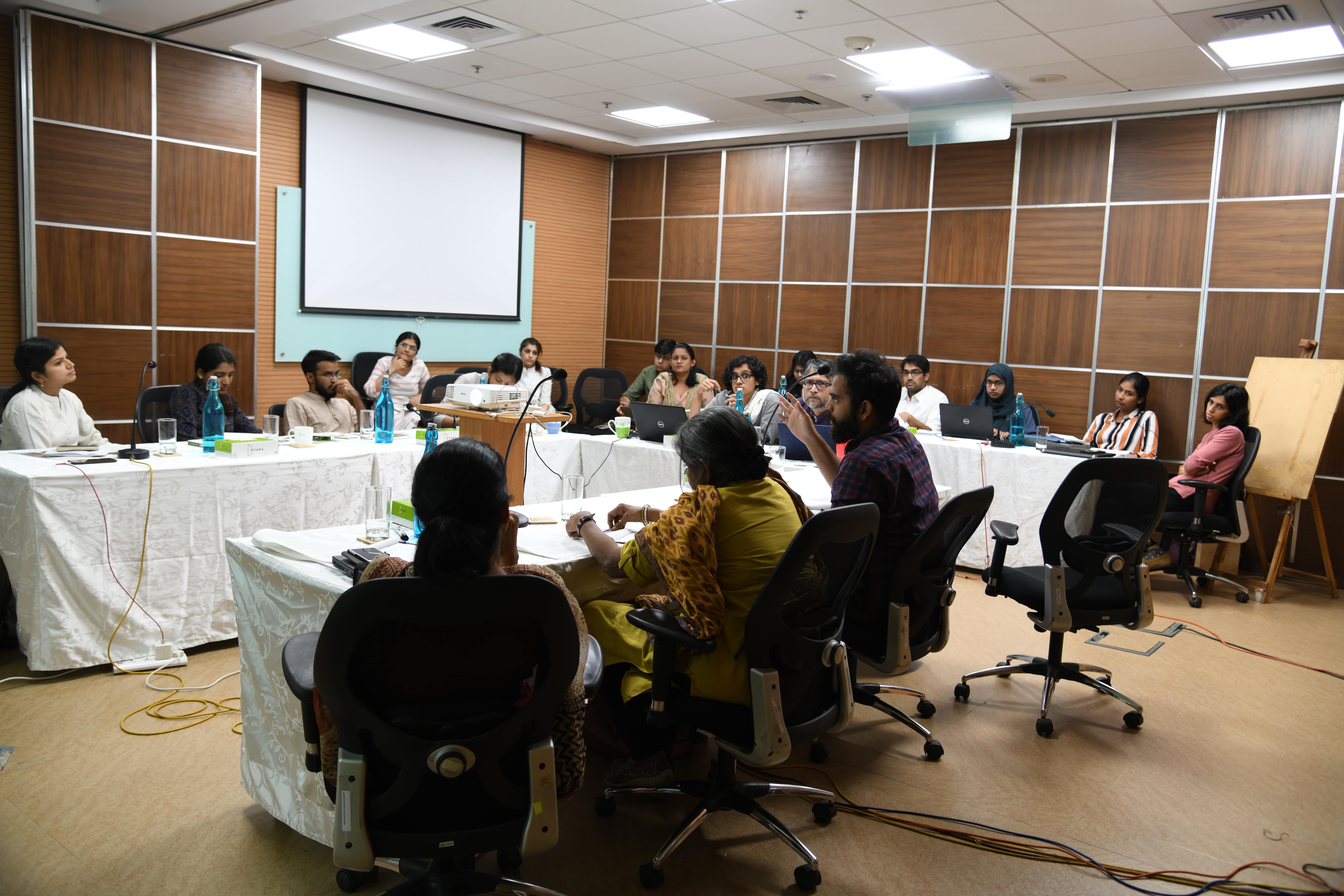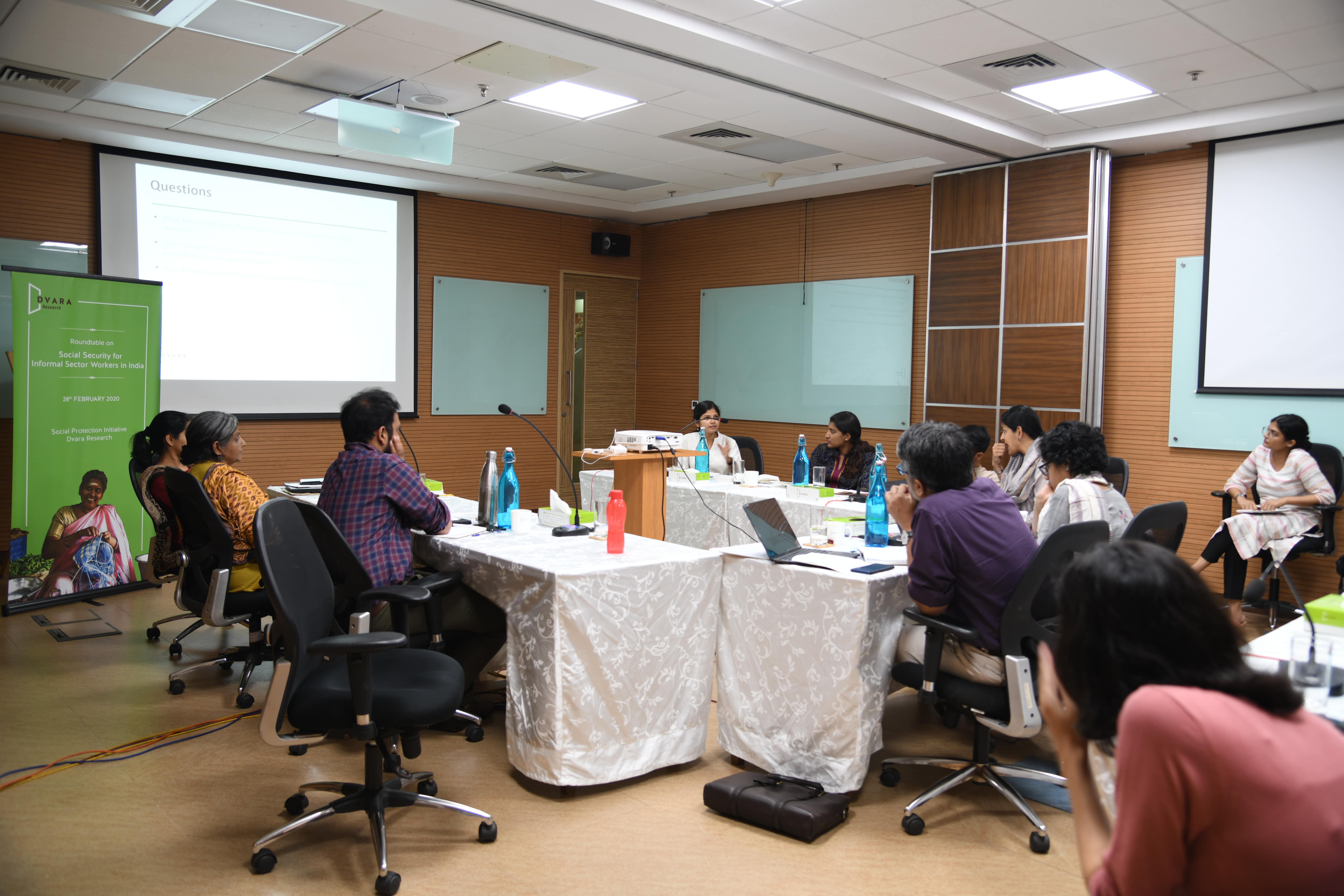The Social Protection Initiative at Dvara Research organized a roundtable discussion on Social Security for Informal Sector Workers on 28 February 2020. This post sets out some of the insights from the roundtable.

The context for this roundtable was the introduction of Code for Social Security Bill, 2019 in parliament earlier this year. This was one of the four proposed labour codes to consolidate India’s labour legislation. Like the existing scheme of labour welfare legislation, much of the Bill makes provision for workers in the organized sector. Chapter IX of the Bill provides specifically for those in the informal sector but does not contain any significant changes from the Unorganised Workers Social Security Act, 2008. S. 109 of the Bill only provides that the Central and State government shall frame schemes for the benefit of the unorganized sector.
Unorganised sector workers account for about three-quarters of India’s workforce, with another 49% of salaried workers without a contract, paid leave or any form of social security. (Government of India, 2019) With no significant proposals made in the code to provide social security for this segment, the roundtable began with discussions around identifying informal sector workers and the floor level protection that ought to be provided in the text of the Bill. There were also focused discussions on understanding the role of private markets to complement the efforts of the state in providing risk protection for unorganised sector workers.

Some of the insights from the roundtable were as follows:
Summary of Roundtable Proceedings:
1. How should any proposed legislation identify informal workers? Who is an informal worker? Is there a need for so many categories of workers? Is there a need to categorise gig workers distinctly? Is there a need to categorise migrant workers differently?
There are many persons that could be excluded if we strictly divide workers into strict categories. It was suggested instead that there be only one category of “worker” without strict divisions between formal and informal sectors. Classifying and enumerating workers into categories is one instance of the “listing fallacy” – that placing workers into lists will aid delivering benefits.
2. Why should we move to a more statute-based welfare provision from scheme-based welfare?
In theory, a statute-based welfare framework would offer citizens a legal entitlement to welfare. This was visible with the emergence of the Mahatma Gandhi Rural Employment Guarantee Act (MNREGA) in certain pockets in the country as well with the National Food Security Act (NFSA). The statute should aim at design architecture, substantive points and better clarity over objectives and entitlements which can guide delegated rule-making while allowing for the quantum and nature of benefits to evolve for time based on the needs of the citizens.
3. How do we identify the employer in complex supply chains that are present today?
Traditionally, there is a key role played by the employer in providing social security for the employee of an organisation. In the informal sector, the identification of this employer may not always be straightforward. There is a need for more research in understanding complex supply chains and incentives in the labour market. This will identify principal employers and help impose liabilities and obligations for social protection. It is also necessary to provide for social security where there is no clear-cut employer-employee relationship. As a starting point, there is a need to figure out at least how to identify such a relation even when they are seemingly absent. That said, we can consider existing knowledge about regulating agents and broker models to think about how we can target liability and obligations to provide social protection.
4. What are the floor level social security protections that should be afforded to workers?
There are various definitions of social security offered by various organisations such as the ILO, Work Bank and national governments. However, it is vital for the country (and in fact each state) to have a definition for a minimum level of social security to all citizens. Basic necessities such as health care, old-age security, unemployment insurance, minimum wage etc. should be provided by the state. It is also necessary to think of social security as a preventive measure – skilling, minimum safety in occupational conditions, insurance against natural disasters and climate change etc. in designing social protection systems. Finally, social security floors should account for protections against privacy risks and a basic guarantee of work.
5. How do we design adequate and accessible social security?
There is a need to learn from informal, community-driven mechanisms that have worked well in providing access to welfare for low-income households. For example, self-help groups (SHGs) work because they are centred on the identity of the worker and the common requirements that a group shares. The design of protections should accommodate the fundamental risks that workers face. For example, incentive structures in ride-hailing and domestic workers operate in such a way that working through hazardous conditions can be more profitable. The nature of higher risk work mandates the need for adequate insurance for the individual and the household to cover for risks of health expenses and the lack of income while convalescing.
We have previously commented on the Code here and have put out a policy brief on social security for informal sector workers here.
___
Reference
Government of India. (2019). Periodic Labour Force Survey, 2017-18. Retrieved from http://www.mospi.gov.in/sites/default/files/publication_reports/Annual%20Report%2C%20PLFS%202017-18_31052019.pdf


